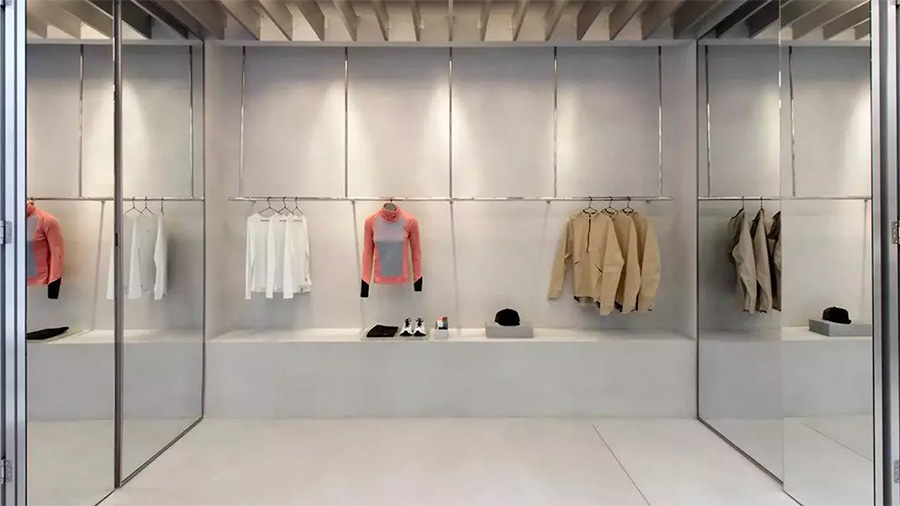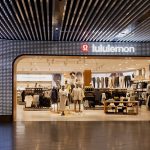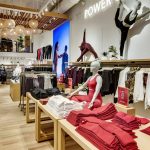Speaking at the Stifel 2023 Cross Sector Insight Conference, On’s Co-CEOs, Marc Maurer and Martin Hoffmann, said that while the faster growth is expected to come from direct-to-consumer (DTC), the running-focused brand is just getting started expanding into more mainstream wholesale accounts, marked by its recent expansion at Dick’s Sporting Goods and Foot Locker.
“People who run are buying in very different channels, and we want to be there where they are buying the shoes as long as this channel provides a premium environment,” said Maurer. “So, we’ve been very intentional from the beginning to build a multi-channel brand.”
He noted that On’s fast growth in its 13-year history to surpass CHF 1.22 billion (U.S.$ 1.34 bn) in sales in 2022 is due to its focus on reaching customers through wholesale at the beginning and converting them into e-commerce customers. He said this enabled On to reach new customers much quicker than a pure DTC model, and its wholesale accounts continue accelerating customer acquisition today.
“At the same time, we are extremely convinced that the customer will have the best experience buying an On product in an On environment because it’s the only place where you find all the shoes, the only place where you find the stories around the brand and so on,” said Maurer. “And this is what we want to do, and this is what we have seen in the past.”
On began opening retail stores in 2019, with a flagship in New York City. It has since opened stores in China and flagships in Tokyo and London. In the U.S., it plans to open stores this year in Brooklyn’s Williamsburg neighborhood and Miami. Maurer said of physical retail, “They play an important part in that journey as well.”
Looking to the future, Maurer sees channels becoming “more blurry” with increased data sharing between wholesale partners and brands and greater collaboration in merchandising stores.
“Things will become more blurry, and it will not be black and white where this a wholesale environment and this is an On brand environment,” said Maurer. “But I think the partnerships will become much closer between your important accounts and us as a brand.”
Asked about expansion into Foot Locker and Dick’s, where On has reached less than 10 percent of its doors, Maurer said beyond the premium focus, deciding which wholesale accounts to sell through depends on the “community that we want to reach.”
Foot Locker “reaches a younger, very diverse audience that is harder for us to reach directly with our own channels. So, the customer acquisition costs we would have via e-com to reach into that community is way higher than partnering with Foot Locker, which already has some authenticity.”
Mauer said On then partnered with Foot Locker to decide which stores best fit to sell On products.
At Dick’s, the Swiss-running brand started with seven stores and has quickly expanded to 58 due to a strong response. On officials, during its first quarter call, said Dick’s delivered the “highest average sell-through” across On’s wholesale network in the period. Dick’s also boasted the highest apparel share among On’s key accounts.
Said Maurer at the Stifel conference about Dick’s, “We see extremely strong sell-through on the doors that we are in, and we’re also very happy with the apparel share in some of these stores.”
At the same time, Maurer noted that it is avoiding channels that are “not premium, which means price, discount-led and channels that are not reaching into the core communities that we’re trying to penetrate.”
He noted that the company had recently exited some comfort and brown shoe accounts in the U.S. and closed some in central Europe. Maurer said, “We feel there’s a better way to kind of serve those consumers with accounts more focused on a differentiated consumer.”
Asked about the risks expanding to more mainstream accounts could have on the brand’s premium positioning, Maurer said On remained in only a small amount of accounts, such as Dick’s and Foot Locker, and is just getting started broadening wholesale beyond specialty accounts in other regions, citing Korea and Latin America.
“This gives us the opportunity to still continuously grow our wholesale distribution globally without being over-distributed,” said Maurer. “And, at the same time, we have proven over the last 13 years that we can grow same-store numbers every year by expanding our product assortment by bringing more commercially relevant products to the market. So, this year within the last 12 months, with the new running products that we brought out, we significantly increased our share in run specialty by having products that are much more relevant to the customer. So, it’s always a combination of basically the same store growth with existing and new products and then the expansion. But we have a lot of opportunities to also balance when we see that maybe in one market we go too fast. We can hold a little bit back to push another market to also have that balance on a global level.”
Hoffmann, also CFO of the On brand, noted that several larger wholesale partners “are upscaling,” noting, for example, that Dick’s had elevated its approach versus “five years ago.” He also noted Sports Direct’s efforts to upgrade its store environment. Hoffman said that Sports Direct’s owner Mike Ashley asked On’s team, “What do my stores need to look like and what do I need to be?” to better secure allocations of On. He said similar conversations were taking place with other wholesale accounts. Hoffmann said, “They’re upscaling the stores, and as they’re doing that, it also helps us to then increase the penetration that we can have.”
Photo courtesy On
















